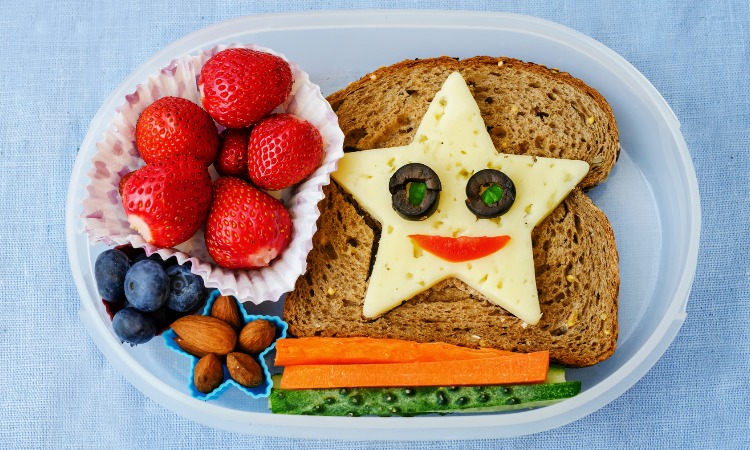
This National Healthy Eating Week (13-17 June) is a great chance to make some healthier choices for your body, which can have huge benefits for your teeth.
But if you’ve been struggling to eat well, these 5 tips will help turn things around…
- Fruit over smoothies
They seem like an easy way to get your 5 a day, but smoothies are packed with sugar without the fibre that keeps you full. Instead, eat a banana on the go, top your morning porridge with blueberries, or opt for strawberries with fat-free Greek yoghurt for dessert. Always drink a glass of water after to neutralise any natural sugars in your mouth. - Choose water
There’s 7 teaspoons of sugar in a typical can of cola. Even diet soft drinks are loaded with acids that harm tooth enamel. Switch your fizzy can, sugary sports drink or hazelnut latte for a bottle of water or no-added-sugar cordial instead. You’ll feel more awake since your blood sugar levels won’t keep spiking and falling. For a fizzy fix every now and then, add 100% fruit juice to a glass of carbonated water. - Go alcohol-free
It’s easy to forget alcohol contains sugar and has also been linked to mouth cancer. Cutting down will protect your mouth, waistband and liver. Keep it to one drink a night on weekends and you won’t be consuming empty calories, your sleep should improve, and your teeth will look better without those red-wine stains! - Cut ‘sticky’ carbs
Although complex carbs (bread, potatoes, etc.) are essential for energy, avoid those carbs that can become lodged in or stuck to your teeth, such as dried fruit and crisps. After eating, the particles break down and release acids that erode tooth enamel. Refined grains such as white breads, rice and pasta also spike your blood sugar levels so wholegrain varieties will keep you fuller for longer. - Beware hidden sugars
Are you a ketchup fanatic? A baked bean loon? Well one tablespoon of ketchup contains around one teaspoon of added sugar, while half a tin of baked beans includes almost two and a half teaspoons. Cut the condiments and salad dressings and switch to reduced-sugar baked beans.
What amount of sugar is considered high?
A tip to remember is that 4 grams of sugar = one teaspoon.
According to the NHS, “More than 22.5g of total sugars per 100g means that the food is high in sugar, while 5g of total sugars or less per 100g means that the food is low in sugar”.
However, it’s about monitoring your daily intake. The World Health Organisation recommends adults cut their added-sugar intake to 50 grams (12 teaspoons). And they think we could achieve more health benefits if we went further and cut it to 25g (6 teaspoons). Added-sugar levels are listed under ‘Carbohydrates: of which sugars’ on the backs of food labels.
Concerned about your oral health? Book a check up with our dental hygienist ahead of National Healthy Eating Week for an assessment of how your diet is impacting on your teeth.
